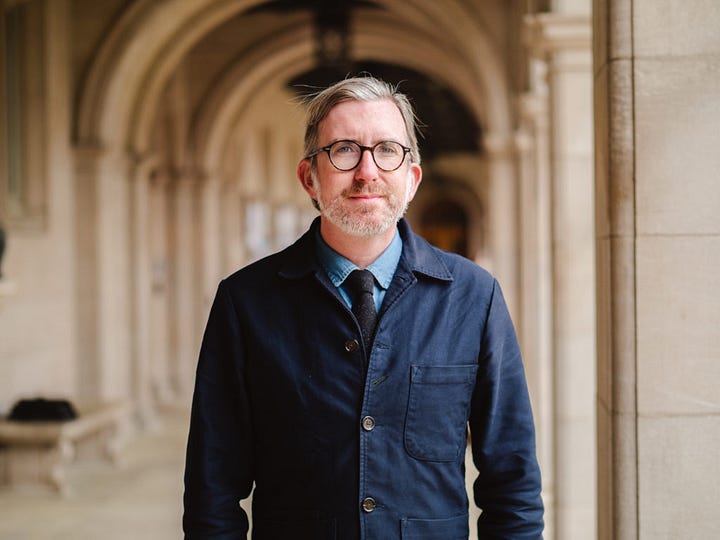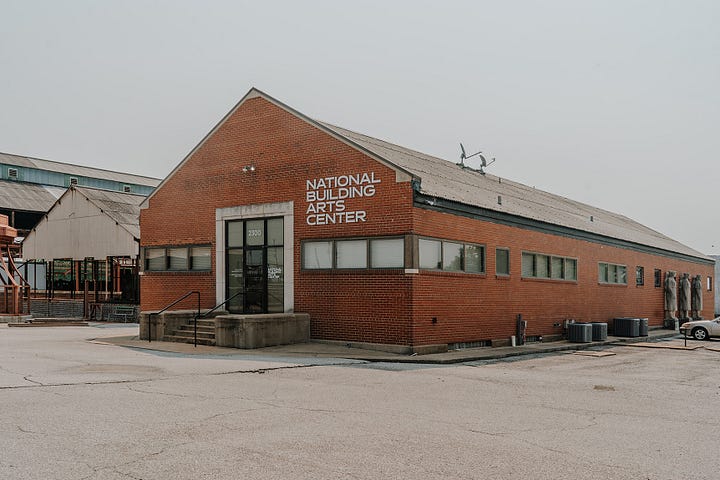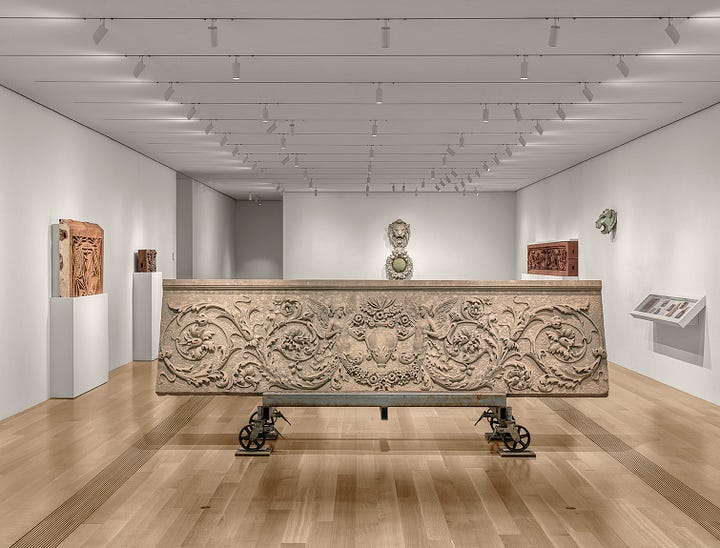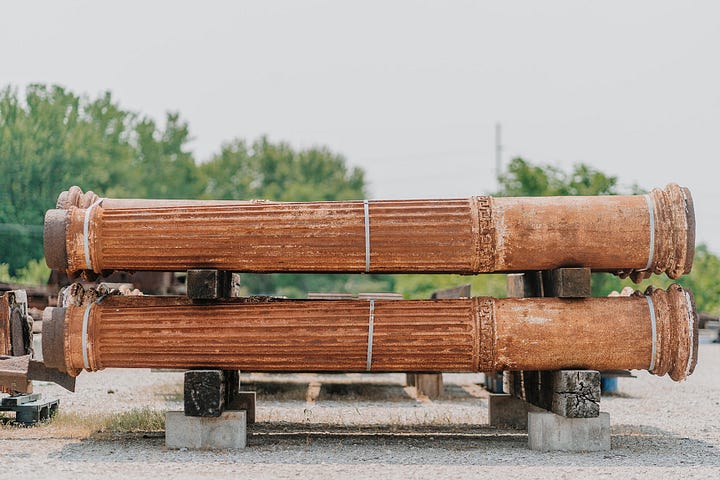The Mosaic of Urban Memory
A new exhibit of salvaged architectural elements uncovers St. Louis's layered history
Hi readers new and old!
Much of the Q&A in this post is available only to paid subscribers. To read all new and archived posts—and if you value reader-supported work—please become a paid subscriber. If you can’t afford a subscription, reply to this email and I’ll comp you, no questions asked. 🙏 Regardless, please tap the ❤️ above if you like this post.
Yesterday I hosted my first subscriber event in D.C. at the Bridge Park — it was so, so great! I loved learning about this transformative project and sharing a meal with subscribers afterward. Recap forthcoming for paid subscribers! Meanwhile, the next event will be in Boston on November 16th — upgrade to get the invite first!


Urban Archeology: Lost Buildings of St. Louis is a new exhibit at the Pulitzer Arts Foundation that features objects from the National Building Arts Center’s idiosyncratic collection of architectural salvage. I spoke to the exhibit’s curator, Michael Allen, Director, National Building Arts Center, about the exhibit and St. Louis’s ongoing demolition of historic residential and commercial buildings.
St. Louis’s population peaked at more than 850,000 people in 1950, when the city was the eighth-largest in the country. Now St. Louis has fewer than 300,000 people. As a result of population decline, disinvestment, racial segregation, and misguided urban renewal schemes, the city has lost hundreds of both extraordinary and everyday historic buildings. This exhibit — which has attracted droves of visitors at a time when many arts institutions are struggling — helps to form what Allen calls the “mosaic of urban memory.”
How did you decide what you were going to include in this exhibit? What message were you trying to tell people about St. Louis and its architecture?
The exhibit has everything — from pre-Civil War iron columns to Louis Sullivan terra cotta spandrels. But I wanted the message of the show to be, foremost, that the recovery of these pieces is in service of deeper understandings of these objects and how they arrived into the collection.


There are some pieces that I knew instantly I would try to put this into this exhibition. For example, there was a piece from a Black confectionary that was torn down by a speculative developer. It's just literally some wood with a black and white star painted on it that hung over the entrance for years. That piece came from a Black artist named Robert Green who grew up in Pruitt-Igoe and now lives about eight blocks north. He started collecting years ago from the Pruitt-Igoe site and from the neighborhood as buildings were coming down. Now he has a gallery in a historic house featuring a huge collection of what he likes: street signs, address signs, signs of stores. He collects the markers of the neighborhood he remembers.

And then there’s an address stone from a mansion, but most of the materials were lost when the building was torn down by the St. Louis Symphony Orchestra for an expansion of their building last year. That house became one of the biggest preservation battles and kind of reactivated the local preservation movement, which had been dormant for a long time.
We literally have a brick in a case. But a brick is not just a brick. It's an 1859 brick from a building that burned last year on the north side, the area of the city which has the worst disinvestment. If that same building was on the south side, it would have been worth half a million or more.
People looking at those pieces at first might think, well, why are they in here next to all these huge, ornate pieces? But that’s the versatility of this kind of collecting. All of these pieces belong because they all compose the larger mosaic of urban memory.
So the collection is something quite different from typical historical preservation.
The exhibition title emerged from a phrase that our founder used in an interview in 1983 where he said that he thought what he was doing was urban archaeology. He was taking entire elevations or huge pieces off of buildings. He didn't feel a kinship to the historic preservation movement, which he thought was really fixated on this idea of the whole building or the intact site. Also he thought architecture and architectural history was an elitist endeavor that overlooked the contributions of craftsmen and women and other sort of supposed non-experts who shaped the built environment.
So archeology to him was the right word because it's an open endeavor. An artifact uncovered through archeological means has multiple readings and the archeologist invites multiple readings. I thought that was a great phrase to emphasize that the point of this show is not to gaze at these things just for their beauty, but to really understand why this collection exists and how it was put together.

When I think about St. Louis, I think about the loss of its urban fabric and constant sense of looking back at what the city once was. Can the city still look ahead to the future?
One of my aims with the show was to reinvestigate civic moments that have been forgotten or buried or are not fresh to today’s publics.
There is an ongoing struggle to hold the city together in the face of forces of destruction and I wanted the exhibit to narrate that in the present tense. We have recently-collected artifacts from demolished buildings on the north side, which is continuing to disintegrate even beyond the poison fruit of redlining. These show how new wounds are being inflicted. I see the show as sort of a consciousness-raising and potential mobilization of spirits around questions like: What do we want to save? What's worth fighting for? What's worth defending?




